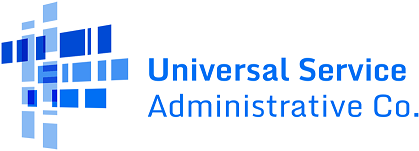Orders
This webpage outlines Lifeline program orders and any active disaster relief waivers released by the Federal Communications Commission (FCC) and the Universal Service Administrative Company (USAC).
Orders
- All Lifeline program Orders.
- 2019 Lifeline Order. In November 2019, the FCC released the 2019 Lifeline Order. The 2019 Lifeline Order prohibits carriers from paying commissions on Lifeline enrollments to their agents/employees, requires eligibility documentation to be collected in certain instances during annual recertification, codifies existing USAC processes to prevent fraudulent enrollment of deceased subscribers and ensure carriers cannot claim more subscribers than are recorded in NLAD, and codifies rules regarding the creation and mandatory use of the Representative Accountability Database (RAD).
- 2017 Lifeline Order. In December 2017, the FCC released the 2017 Lifeline Order to minimize unnecessary document retention burdens for Lifeline providers, to clarify which services may be claimed as qualifying broadband service, and to eliminate the Lifeline benefit port freeze, which required Lifeline subscribers to remain with their Lifeline service provider for a minimum period (60 days for voice service and 12 months for broadband service).
- 2016 Lifeline Order. In April 2016, the FCC released the 2016 Lifeline Order to allow Lifeline subscribers to apply the $9.25 monthly Lifeline discount to broadband and broadband-voice bundled service, set minimum service standards for Lifeline-supported service, and establish the National Verifier as a neutral third party to make program eligibility decisions.
- 2015 Lifeline Order. In June 2015, the FCC released the 2015 Lifeline Order, which required Lifeline providers to retain documentation demonstrating subscriber eligibility, established a uniform “snapshot” date each month for Lifeline providers to calculate their number of subscribers for reimbursement, limited Lifeline reimbursement to Lifeline providers directly serving Lifeline customers by eliminating resale requirements, and interpreted “former reservations in Oklahoma” eligible for enhanced Lifeline support as the geographic boundaries reflected in the Historical Map of Oklahoma 1870-1890.
- 2012 Lifeline Order. In February 2012, the FCC released the 2012 Lifeline Reform Order, which adopted specific performance goals and measures for the program, established $9.25 as the monthly Lifeline discount for voice service in non-Tribal areas, set uniform eligibility criteria for consumers to qualify for Lifeline, limited the Lifeline benefit to one-per-household, required Lifeline providers to obtain proof of consumer eligibility at enrollment and recertify subscriber eligibility annually, and established the National Lifeline Accountability Database (NLAD) to detect and eliminate duplicative Lifeline support.
Disaster Relief
- California Wildfires. The FCC and USAC temporarily waived the annual recertification requirements and de-enrollment for failed recertification under the Lifeline rules for households receiving broadband-only Lifeline service in Affected Disaster Areas.
- Hurricane Helene Order 1. The FCC and USAC temporarily waived non-usage, de-enrollment for non-usage, annual recertification, and reverification requirements under the Lifeline rules for Lifeline subscribers in in the areas affected by Hurricane Helene, Tropical Storm Helene, and Post-Tropical Cyclone Helene.
- Hurricane Helene Order 2. The FCC and USAC temporarily waived certain Lifeline eligibility requirements for consumers participating in FEMA’s Individuals and Households Program (IHP), as a result of Hurricane Helene, Tropical Storm Helene, and Post-Tropical Cyclone Helene.
- Hurricane Milton Order 1. The FCC and USAC temporarily waived non-usage, de-enrollment for non-usage, annual recertification, and reverification requirements under the Lifeline rules for Lifeline subscribers in in the areas affected by Hurricane Milton other areas subject to new Emergency Declarations or Major Disaster Declarations due to hurricanes, typhoons, tropical storms, tropical cyclones, and wildfires during 2024.
- Hurricane Milton Order 2. The FCC and USAC temporarily waived certain Lifeline eligibility requirements for consumers participating in FEMA’s IHP, as a result of Hurricane Milton and future hurricanes, typhoons, tropical storms, and tropical cyclones occurring in the following six months.
- Hawaii Wildfires Order. The FCC and USAC temporarily waived certain Lifeline eligibility requirements for consumers participating in FEMA’s IHP, as a result of the Hawaii wildfires.
- Typhoon Mawar Order. The FCC and USAC temporarily waived non-usage, de-enrollment for non-usage, annual recertification, and reverification requirements under the Lifeline rules for Lifeline subscribers in Guam and the Northern Mariana Islands.
